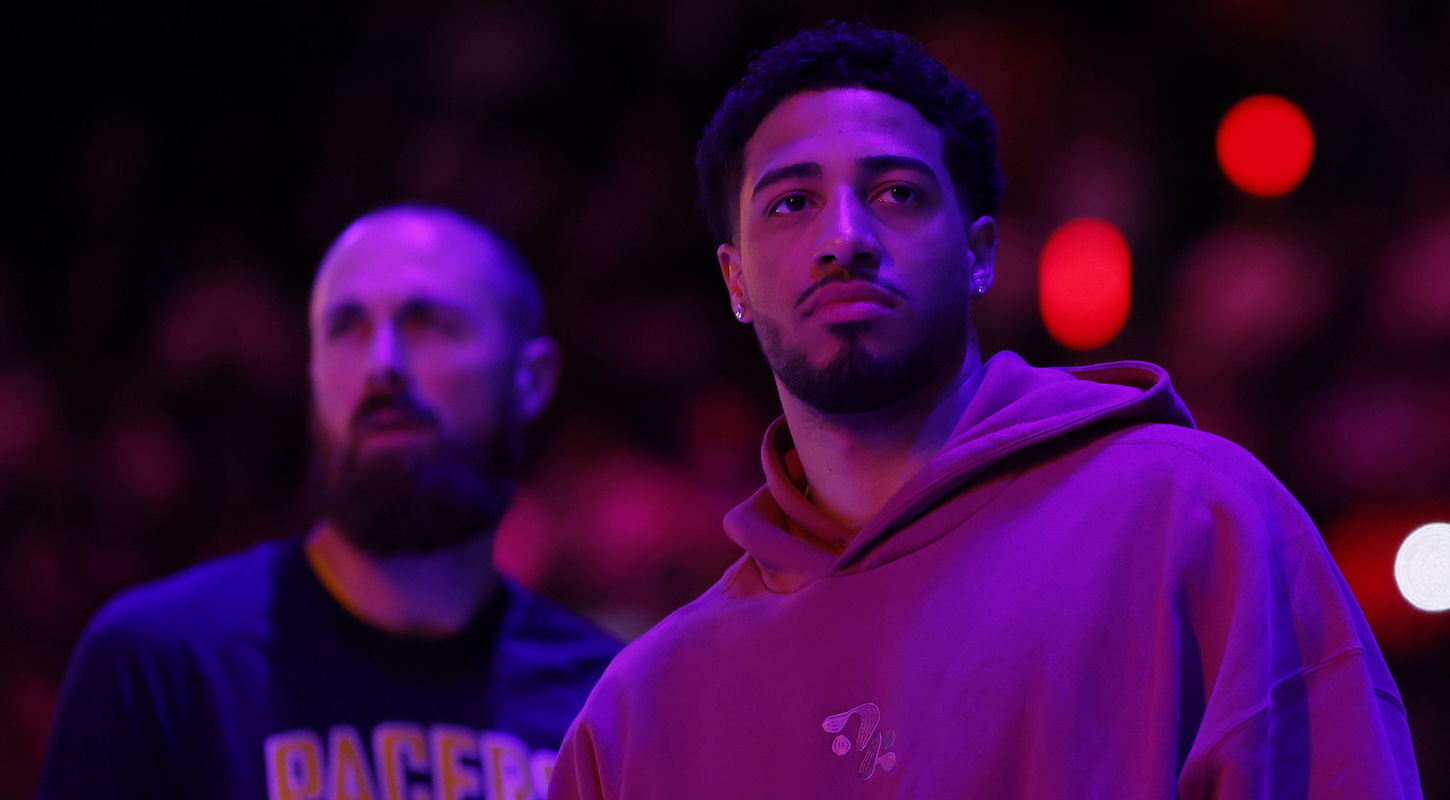Time for some Jelena Ostapenko free association. One, two, three, go: nonstop crabbiness, treating every automated line call as if were personal slander, treating every tennis ball as if she were its executioner, sartorial psychosis, abysmal handshakes, seesawing score lines. Is it frustrating? Is it messy? Does it all add up to an irresistible reverse-charisma? Yes to all of the above. There are few players I like watching more than this hammy and combustible 25-year-old, who is doomed to play tennis only one way. When it is working—as it was when she won the 2017 French Open unseeded—her opponent is lucky to get strings on the ball. When it is not working—which could well be 90 seconds later—Jelena is lucky to keep the ball out of the front row. There is no back-up plan, and there never will be. There is only the Penko Way. Core tenets are big winners, big misfires, and cartoonishly overcooked facial expressions at every turn.
On Sunday evening in Indian Wells, Peak Ostapenko was within grasp. Just follow the scoreboard to understand how close we came. To begin her third-round match against Petra Kvitova—a fellow major champion, and streaky in her own right, though operating within a narrow sliver of the emotional range—Ostapenko won a 6-0 set in 26 minutes. Then Kvitova won the second set 6-0 in 36 minutes, and ran up a 4-0 lead in the third. Had Kvitova won just two more games, she'd been credited as a collaborator in the most spiritually apt Jelena Ostapenko score line possible. It was, in any case, the first time in the existence of the WTA 1000-level tournament that 6-0 sets had been exchanged. History was still made in this volatile encounter between the No. 15 seed Kvitova and No. 24 seed Ostapenko, even if the visual purity of the triple bagel was compromised.
The deciding set had its hiccups. Down 3-0 in the third, Ostapenko, whose coughing increased as her tennis receded, took a medical timeout for an ear infection. She then lost one more game—her 10th in a row!—before stringing together four straight games to level the third set at 4-4. That was Kvitova's cue to call back the trainer for a left hand injury. Just to get it out of the way: there was precedent for Ostapenko's ailment, which had been bothering her throughout her previous match, and the umpire confirmed that Kvitova was bleeding. But it's hard not to read a bit of gamesmanship into such momentum-breaking timeouts. It would not be the first time that our perpetually red queen came under such suspicions. Two years ago at Wimbledon, Ajla Tomljanovic told the umpire that she thought Ostapenko was faking injury, and the two players beefed stupendously at the net. "She cannot say anything unless she knows anything, and she's not me so she cannot feel the pain," Ostapenko said after the match. "I'm the one who feels the pain."
It took four minutes for Kvitova to get her finger taped up. When play resumed, Ostapenko dropped her serve, and Kvitova served out the match, 0-6, 6-0, 6-4. The post-match handshake was warmer than the preceding events might have led one to expect. As uneven as it felt narratively, it was as dead even statistically. Both players won 75 points. Each player won 50 percent of service points and 50 percent of return points.
Ostapenko, who began this season with a quarterfinal run at the Australian Open, is now out of Indian Wells, where she made the semifinal in 2021. This prestigious event has lost a critical chaos agent. Imagine making a total-access docuseries about the psychodrama in professional tennis and not following this character, who steps out in iconic drip every week:
Ostapenko Summer 2022 COLLECTION ✨✨ pic.twitter.com/wg3LU2dHCq
— Sabinelisickifansss (@lisickifansss) June 28, 2022
Missed opportunities!







